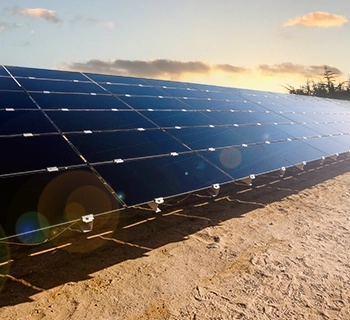Recently, there has been a lot of talk about rural electrification in developing regions, which involves using the combinations of clean solar and energy storage to bring power to remote communities that currently have no access to power. This brings us to the much-discussed topic of Microgrids, which are currently gaining more popularity with regards to powering residential as well as commercial setups. With the emergence of more affordable sources of energy like wind and photovoltaics, the renewable powered Microgrids have turned out to be financially convenient alternatives to traditional power generation methods.
What Is A Microgrid?
A microgrid is basically an energy distribution network which depends on the local means of generating electricity. Although it is specifically designed to function independently, it might also work in sync within a bigger network in a restricted area.
Microgrids consist of modular components that can be easily installed even in the most challenging environments. Besides, they are capable of producing efficient power anywhere and anytime without the need for transmission lines or losses associated with transformers.
If you are planning to build a Microgrid, here are five great practices that will lead you to its success:
- Consider the Load
When planning to build a microgrid, always make sure to calculate the load as it plays a crucial role in determining the kind of microgrid system you should opt. The load can be industrial, commercial, or residential. Consider all these factors and explore your best available choices to suit the requirements.
- Have a Remote Monitoring System in Place
A remote monitoring system is critical for effective microgrid management as it provides real time updates on the health and performance of your microgrid system. In case a problem arises, it can be fixed easily by local technicians.
- Choose Quality Generator sets
It is essential to have high-performance generator sets as the backup power source so that you can access reliable power at the time of low renewable energy generation. Even if the battery storage of the system gets depleted by any chance, generator sets come in handy by providing consistent supply of power, thereby contributing to the overall reliability of your microgrid system.
- Invest in a Dependable Energy Storage System
Energy storage plays an important role in the smooth functioning of a microgrid system. It stores all the surplus energy produced during periods of high renewal energy generation and supplies power when there is a high demand or low generation. Hence, investing in a proactive and dependable energy storage system can help you in stabilizing your Microgrid.
- Implement Advanced Control Systems
For efficient energy management in the microgrid, it is important to implement advanced control systems. These controls can help in optimizing energy distribution, managing power flow, and coordinating the microgrid’s various components.
By following these practices when building a microgrid, you can ensure a reliable energy system that meets each of your specific requirements.
At Al-Bahar, we offer a full range of Solar and Microgrid Solutions to support you at every phase of your project. You can count on us for everything from designing a customised solution with maximised renewable penetration to delivering complete turnkey projects, enabling parts availability, product upgrades, service agreements, warranties, and more.
To discuss your project requirements, feel free to get in touch with us!


 30 Mins
30 Mins